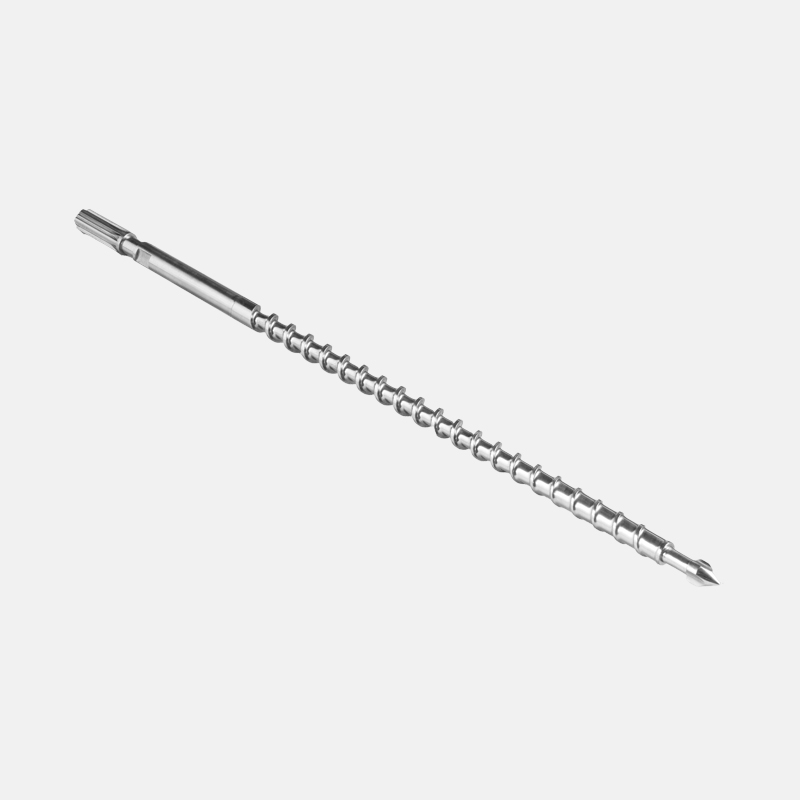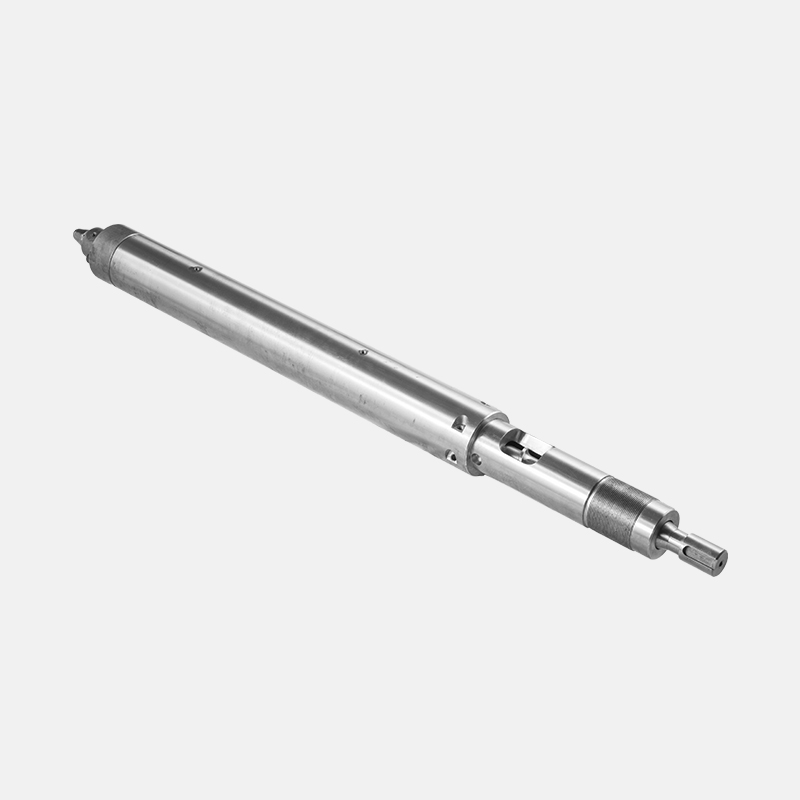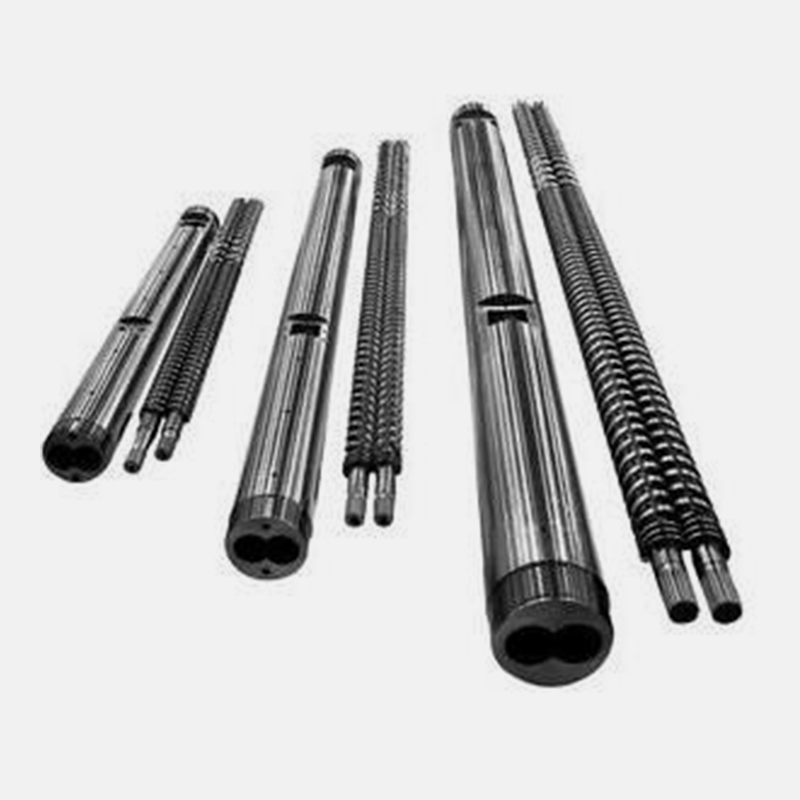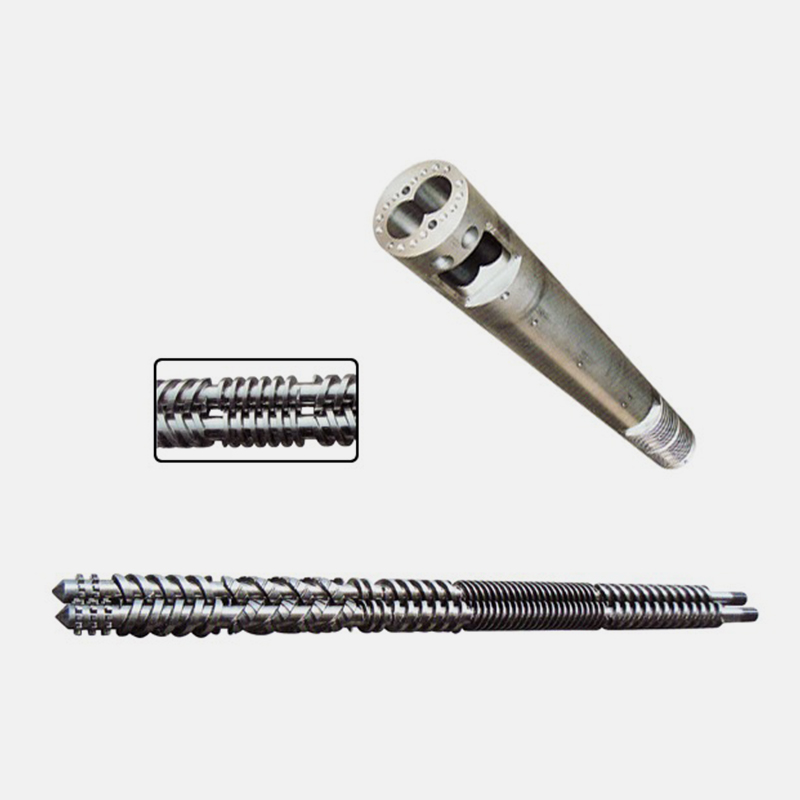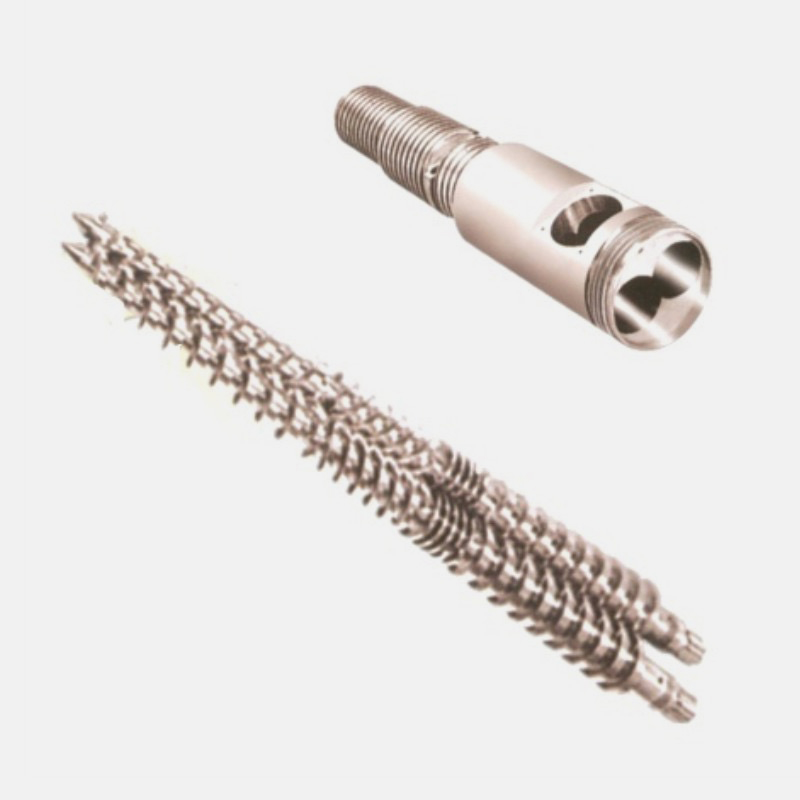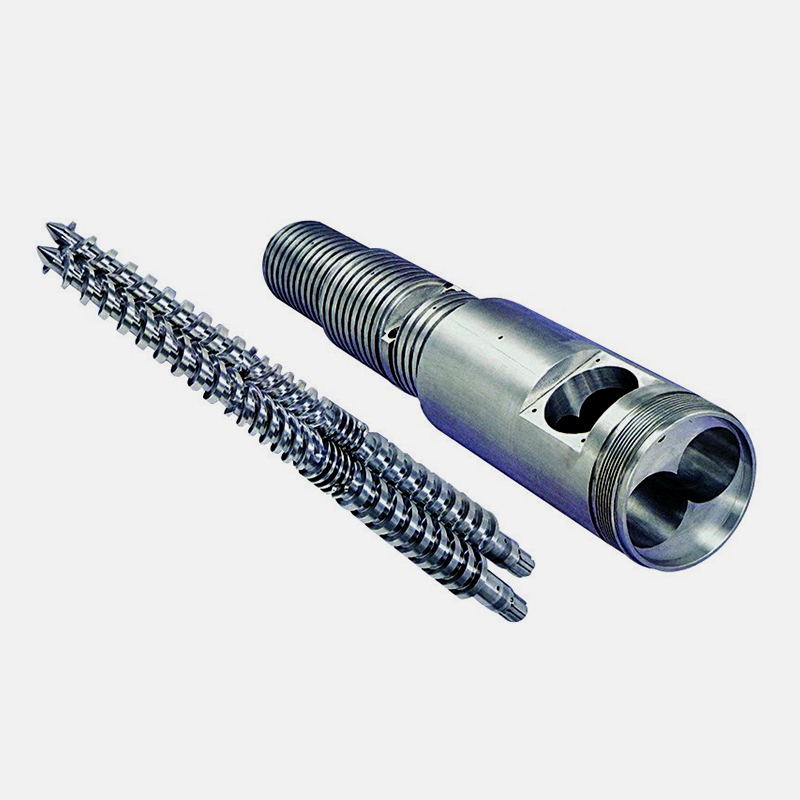We know that conventionally speaking, the twin-screw barrel is connected by building blocks, and the connection method is flanged. The L/D (length-to-diameter ratio) of each barrel is 4:1, so the model is L/D=40:1. It is a 10-section barrel.
Back to the topic, let’s talk about the material problem of the talkie barrel. The most commonly used in the conventional market are two types. The first material is made of nitrided steel, and the second is the alloy sleeve (here divided into two kinds 1 , C type sleeve 2, overall sleeve),
What is the difference between these two usages: Corrosion resistance: Nitrided steel>Alloy sleeve, Wear resistance: Alloy sleeve>Nitrided steel
Looking at the picture, it can be seen that the base material of the barrel is nitrided steel (38CrMoAl), which is processed from a series of forgings to finished products, and finally nitriding heat treatment, nitriding treatment, nitrogen filling in the nitriding furnace for 72 hours, the surface hardness is HB950- 1050,
The second kind of base material is high-quality 45# steel, (insert why you choose it, because its performance is relatively stable and it has good compatibility with most types of steel), but the base material also has the disadvantage of poor hardness and resistance The coefficient of wear is small, so an alloy inner bushing with a high wear resistance coefficient must be pressed inside the barrel, so there are two kinds of inner bushings, C-type bushings, the overall hardness of the bushing is HRC58-64
(Note: Pay attention to the material of the bushing, the conventional Cr12Mov, W6Mo5Cr4V2, 101 Fe-Ni-B, there is a bit of a doorway)
More about:bimetallic screw barrel

 English
English 简体中文
简体中文 España
España عربى
عربى
